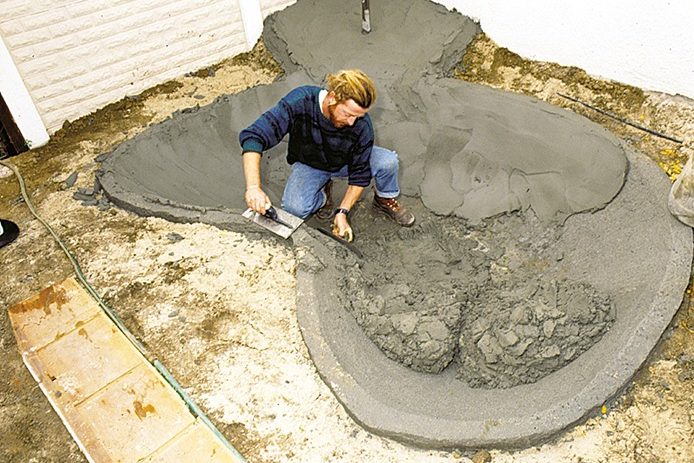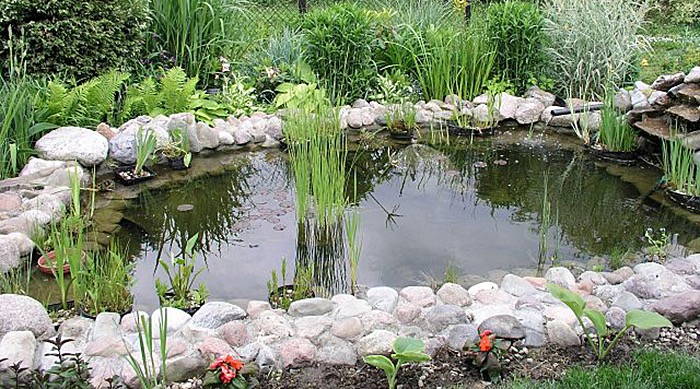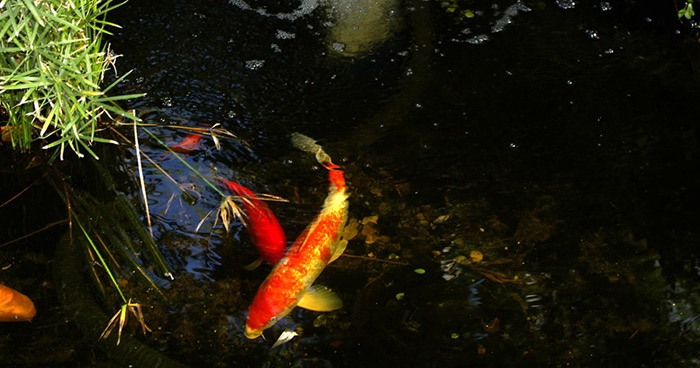Comparing Pond Construction Methods

Comparing & Choosing the Best Pond Construction Methods
Fish and water feature pond construction methods are vast and varied, and range from using flexible, waterproof liners, to laying bricks, blocks with mortar or formed and shaped concrete and then plastering the structure.
Before you decide what sort of pond you are going to build (or have built), it’s a good idea to compare all the different methods in terms of:
- Cost
- Availability of materials
- Ease of construction (including your skills if you’re going the DIY route)
- Final effect
- Any other pros and cons you can think of
Your first step will be to locate suitable fish pond supplies. You can then either work with what is available or look further afield to find exactly what you want – and need – for your chosen pond type.
The Most Common Construction Methods
In broad terms, the most common construction methods people use to build garden fish ponds involve:
- Installing flexible liners, EPDM (an ethylene propylene polymer) being the most common in the U.S.
- Installing rigid liners or preformed ponds usually made from either fiberglass or some type of thermoplastic material
- Constructing ponds from bricks, blocks or from either real or simulated stone units
- Building ponds from concrete that is cast on site (in situ)
Where flexible liners and preformed ponds are used, these are the only materials you need to create an impervious, watertight shell. But when ponds are built using the other specified materials, it is necessary to plaster the inside of the shell and/or seal them with some other suitable material. Rubberized bitumen is a common choice for plastered pools, although some people prefer the more expensive option of using a glass fiber coating.
From this you should immediately be able to see that the least expensive options are to use liners of some sort. While flexible liners are the least expensive (some being more pricey than others), preformed ponds are more likely to last longer than those constructed using a flexible liner. But preformed ponds are generally quite small and you are limited by the shapes supplied.
DIY or Find a Supplier
Having established the cost and availability of the materials you plan to use, you need to be sure that you can work with them, or find someone to do the job for you. None of the construction methods mentioned here is particularly difficult, although concrete-work and laying bricks, blocks and stone units all require some basic building skills – and a bit of experience. Concrete-work can also be quite heavy work.
Choose Your Style
Final effect is very important, and you need to know what you are aiming for. The most basic choice is between a formal pond and an informal pond, and you should be guided by the existing layout of your garden or backyard, and any obvious style of your house and other buildings.
What Liner?
Both flexible liners and concrete are good options for informal ponds because they can be formed to create any shape at all. While bricks, blocks and stone may also be used for informal structures, these materials are particularly appropriate when it comes to building more formal structures.
Where flexible liners are used for formal structures, they are usually part of another building system. For example a liner may be used to seal a formal rectangular pond made from timber, or even the inside of a brick-built pond.
So decide what you want and what is feasible. Compare costs and then make up your mind what to build.
What You Need to Know About Pumps When Constructing Your Pond
Before you begin your pond construction you will need to determine the type of pump system your pond will need. Pond pumps are designed for many applications and there are a number of parameters that a pond pump must meet satisfactorily. Some people buy two pumps so that they can use one for a fountain arrangement and the second for the filter. That way they know that they have bought the correct pump for the correct purpose. First of all decide what the purpose of the pump will be. Do you want to use it with an internal or external filter, a fountain, or waterfall?
If you are using a pump for a fountain, it is important that the pump have a prefilter. Without a prefilter the fountain head will get blocked up and require cleaning all the time. A pump that will be used for fountains does not need to be powerful because they are not required to move huge volumes of water, therefore they are less expensive than a filter pump.
The main pump, which is the filter pump, will be the most expensive pump you will have to buy for your pond construction. The main pump works with a filter and should be able to pump small solids of 0.12 to 0.16 inches without becoming clogged. Because filter pumps do not have a prefilter, the dirty water can be moved quickly to keep the pond clean. If you try to use a pump for filter that wasnít made for filtering you may have problems because it will become clogged in the prefilter or it just will not be able to keep up with the volume of water and then you will have a dirty pond.
When choosing a pump you need to purchase a unit that has the correct flow rate and capacity for your pond. The general rule of thumb for this is that the volume of your pond should be circulated through the filter every two hours. Because the pump is so important to the health of your pond, this is one area that you do not want to skimp on.








Before you decide what sort of pond you are going to build, it’s a good idea to compare all the different methods in terms of Cost, Availability of materials, Ease of construction, Final effect, and Any other pros and cons you can think of. Pondpro2000 is good in all.